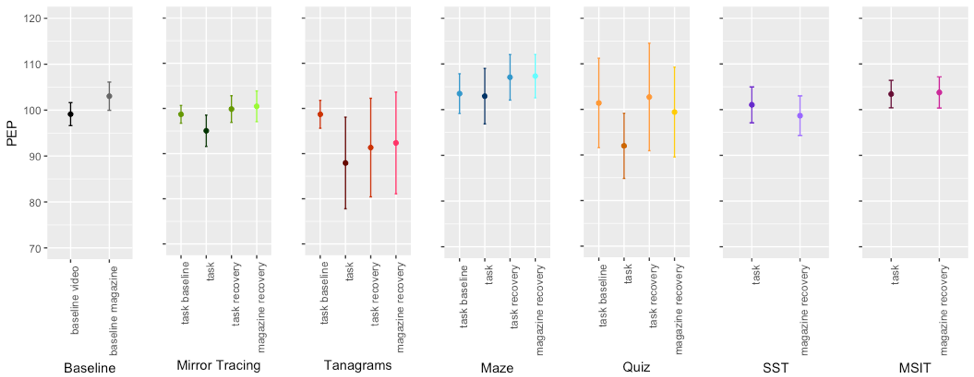In daily life, there are constant changes in the world around you and with that, changing demands on the brain and body. The skill of self-regulation enables us to adjust to those changes, modulating internal and external responses to different circumstances. We need to repeatedly increase activation to challenging or engaging situations and then decrease activation to come back to rest afterward. Much of this is supported physiologically by changes in the autonomic nervous system (ANS), comprised of the sympathetic and parasympathetic nervous systems. The sympathetic system can be thought of as the “fight or flight” system, revving you up to address a threat, and the parasympathetic system can be thought of as the “rest and digest” system, keeping you calm when no threats are present. The goal of the Reactivity and Recovery in the Brain and Body (R2B2) pilot study was to design a series of tasks in the lab to assess this modulatory ability in the ANS. Young adult participants (mean age = 22, N = 27)came into the lab and were presented with a series of alternating challenge and rest tasks. Four of the challenge tasks involved social evaluation (MirrorTracing, Tangrams, Maze, and Quiz), two of the challenge tasks involved cognitive effort (SST and MSIT), and rest tasks involved no element of evaluation or effort (baseline and recovery). The purpose of this task series was to test the repeated reactivity, recovery, and internal organization of sympathetic and parasympathetic system processes. So far only part of the data have been analyzed, but already we are seeing descriptive shifts in physiological systems to the different tasks. Next steps will involve statistical analysis of system dynamics and relating of those shifts to other indicators of behavioral and emotional self-regulation.


